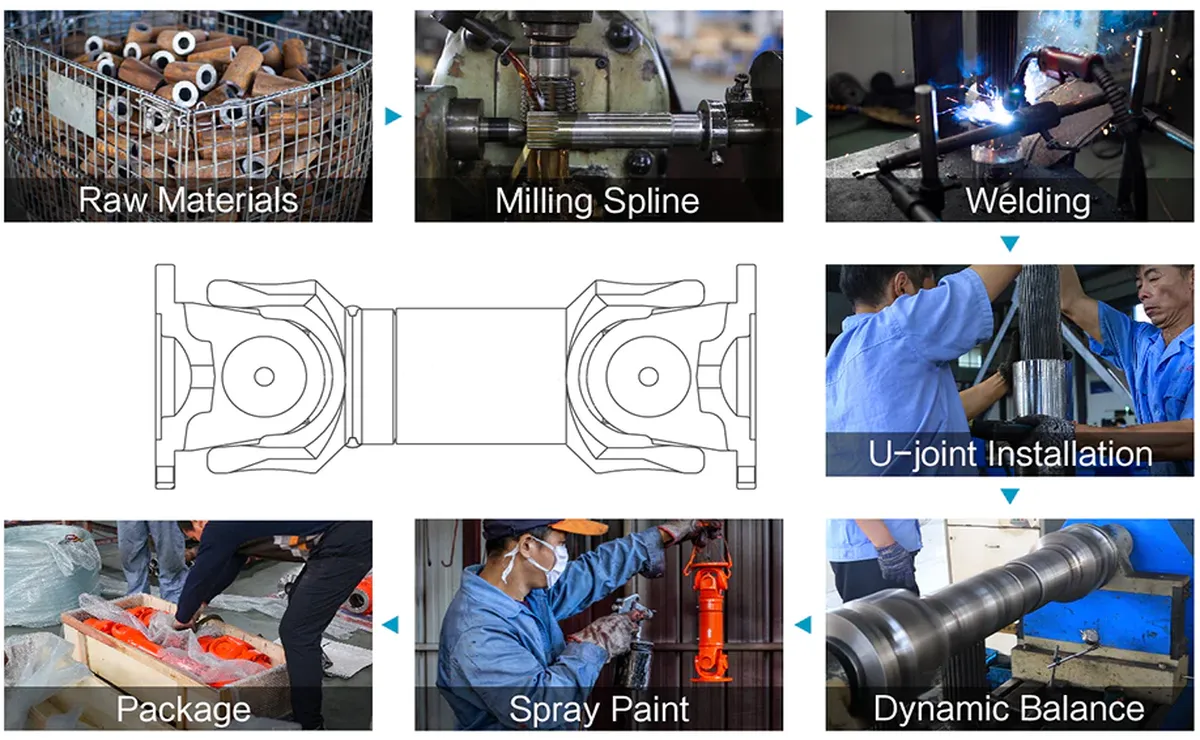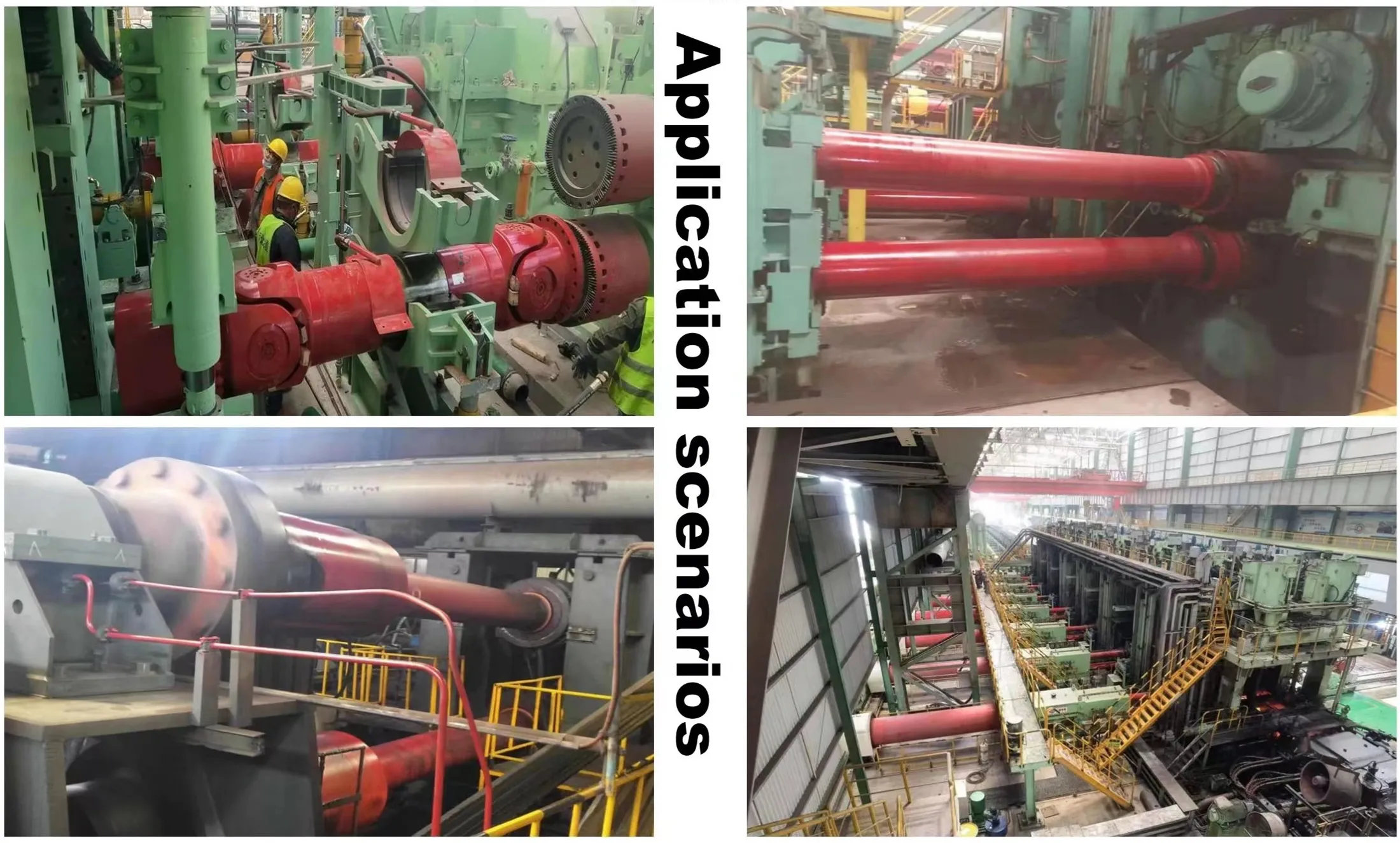
Cardan Shaft Coupling Overview
The High Performance Stainless Steel Universal Joint Cross Machinery Cardan Shaft Coupling SWC-I120A-800 is a real workhorse for strip temper mills. This isn’t just some run-of-the-mill coupling—it’s built to take a beating and keep on ticking, making your machinery hum with efficiency. Think of it as the backbone holding everything together, shrugging off wear and tear like it’s no big deal, and setting the bar high in a crowded field.
Product Specifications and Dimensions
Getting a handle on the SWC-I cardan shaft’s specs and sizes is key to slotting it into your setup without a hitch. Here’s the nitty-gritty laid out for you:
| Type | SWC-I 58 | SWC-I 65 | SWC-I 75 | SWC-I 90 | SWC-I 100 | SWC-I 120 | SWC-I 150 | SWC-I 180 | SWC-I 200 | SWC-I 225 |
|---|---|---|---|---|---|---|---|---|---|---|
| A (L) | 225 | 285 | 335 | 385 | 445 | 500 | 590 | 640 | 775 | 860 |
| B (L) | 150 | 175 | 200 | 240 | 260 | 295 | 370 | 430 | 530 | 600 |
| C (L) | 128 | 156 | 180 | 208 | 220 | 252 | 340 | 348 | 440 | 480 |
Torque and Load Characteristics
This coupling’s made to handle some serious torque—think 180 N*m all the way up to a whopping 22,000 N*m. That kind of range means it’s ready for whatever job you’ve got lined up. It’s like a reliable buddy who’s always up for the heavy lifting, no matter the gig.
Applications of Cardan Shaft Couplings
The SWC-I120A-800 really struts its stuff in strip temper mills. It’s not just about linking parts—it’s about keeping things running smooth as silk, even when alignment’s off or angles get tricky. Imagine a dancer nailing every step on a wobbly stage—that’s this coupling in action.
Our Diverse Product Range
We’re not just about cardan shaft couplings—our lineup’s packed with industrial gear. Think agricultural gearboxes, power output shafts, sprockets, hydraulic couplings, worm gear reducers, racks, roller chains, pulleys, planetary gearboxes, timing pulleys, bushings, and then some. Everything’s built tough, priced fair, and ready to tweak to your specs—just bring us your ideas.

Frequently Asked Questions
- What’s a cardan shaft coupling?
It’s the go-between for two misaligned shafts, keeping things flexible and connected no matter the angle. - Can I get it customized?
You bet—we’ll shape it to your needs, just hand over your specs. - What’s it made of?
High-grade stainless steel—tough, wear-resistant, and built to last. - Where does it shine?
Mostly in industrial spots like strip temper mills—anywhere you need solid torque on tap. - How do I order?
Drop us a line with what you need or swing by our site to get it rolling.
Performance Characteristics of Cardan Shaft
The cardan shaft—aka the universal joint shaft—is a big deal in all kinds of machines, and it’s got some standout traits worth knowing. Here’s what makes it tick:
- Flex on Point: Like a pro athlete, it bends without breaking, sending torque through even when shafts don’t line up—key for keeping things steady in a messy setup.
- Tough as Nails: Made from hardcore materials, it’s in it for the long haul, shrugging off wear like a champ—perfect for the grind.
- Smooth Operator: It moves power with barely a hiccup, cutting energy waste and boosting your gear’s game—like a slick engine purring along.
- Jack of All Trades: From cars to factory floors, it fits in anywhere engineering’s at play.
- Easy Keeper: Set it up right, and it’s low-drama—saving you cash and headaches down the road.
Types and Characteristics of Cardan Shaft
Cardan shafts come in a few styles, each with its own vibe—picking the right one’s half the battle:
- Single Cardan Shaft: The basic model with one joint—simple and solid for jobs with little wiggle room.
- Double Cardan Shaft: Two joints for twice the flex—great for vehicles tackling bigger twists and turns.
- Telescopic Cardan Shaft: Stretchy and adjustable, it’s your guy when distances shift—like a ruler that bends to fit.
What it’s made of matters too—steel brings the brawn, while aluminum keeps things light and nimble where every ounce counts.
Applications of Cardan Shaft
These shafts pop up all over the place—here’s where they’re making waves:
- Automotive: Hooking up transmissions to wheels, they keep the ride smooth and steady.
- Industrial Gear: In conveyors and mixers, they’re the glue keeping power flowing.
- Marine: Powering boat props, they flex and deliver in choppy waters.
- Railways: Linking locomotives to cars, they keep trains rolling right.
- Farming: Connecting engines to tools, they crank up field work efficiency.

Future Development Trends and Opportunities of Cardan Shaft
Cardan shafts are gearing up for a big leap forward. As folks chase efficiency and greener options, expect slick new materials—like composites—to lighten the load and save juice. Toss in smart tech like sensors, and you’ve got gear that tells you how it’s holding up—talk about a game-changer for upkeep. With automation on the rise, these shafts will need to step up for precision-hungry systems. Companies betting on R&D now are the ones who’ll cash in big later.
Choosing a Suitable Cardan Shaft
Finding the right cardan shaft takes some figuring—here’s your playbook:
- Know Your Gig: What’s the job, and what’s the vibe—get the lay of the land.
- Torque Talk: Check the power needs so it doesn’t buckle under pressure.
- Length Matters: Fixed or stretchy—pick what fits your setup’s dance.
- Joint Call: Single or double, match it to the twists you’re facing.
- Material Pick: Steel for strength, aluminum for light—choose your fighter.
- Work Scene: Hot, wet, or wild—make sure it can take the heat.
Conclusion
Cardan shafts are the unsung heroes tying industries together with their bendy, tough, and slick ways. Knowing the types, uses, and material perks helps you pick smart. As tech rolls on, these shafts will keep evolving—staying sharp for whatever’s next. Nail the right choice for your setup, and you’re looking at smooth sailing and a long run.
Author: Dream
All this is pulled from the web—just a heads-up for picking parts. Our gear’s replacement stuff, not the original deal—we don’t own the trademarks. It’s made for aftermarket fixes and fits the originals like a charm. Want the real thing? Hit up the original maker or supplier.
